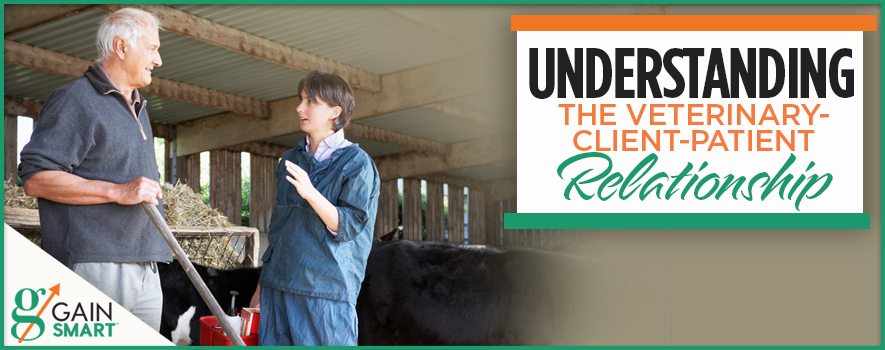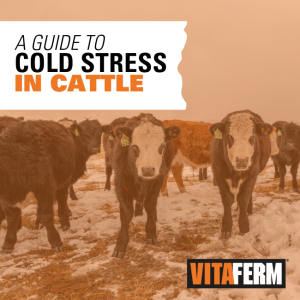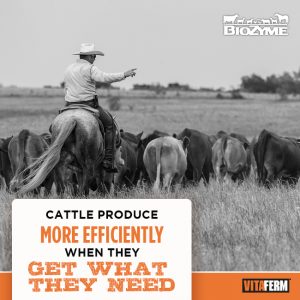
The implications that go along with these regulations have been subjects of much discussion. One implication that will affect some producers more than others is the stipulation that the VFD forms be obtained through a veterinarian — and not just any veterinarian. The veterinarian writing the VFD form must have what’s termed a “veterinary client patient relationship” or VCPR with the producer.
Veterinary Client Patient Relationships (VCPR) Defined
A relationship with a veterinarian can take many forms, but the VCPR — necessary to obtain the proper VFD forms (as well as to use prescription medicines, or injectable or water medications in an extra-label fashion) — is spelled out in state and federal regulations. South Dakota follows the federal VCPR definition, which states that a valid VCPR exists when:
- A veterinarian has assumed the responsibility for making medical judgments regarding the health of (an) animal(s) and the need for medical treatment, and the client (the owner of the animal or animals or other caretaker) has agreed to follow the instructions of the veterinarian;
- There is sufficient knowledge of the animal(s) by the veterinarian to initiate at least a general or preliminary diagnosis of the medical condition of the animal(s); and
- The practicing veterinarian is readily available for follow-up in case of adverse reactions or failure of the regimen of therapy.
Furthermore, the statute states, “Such a relationship can exist only when the veterinarian has recently seen and is personally acquainted with the keeping and care of the animal(s) by virtue of examination of the animal(s), and/or by medically appropriate and timely visits to the premises where the animal(s) are kept.”
It’s that last part that creates uncertainty, since it doesn’t specify how frequently a veterinarian must visit an operation. One could say these requirements were written in a purposefully vague manner: since the rules must apply to all food animal operations, a one-size-fits-all approach is not easily attained. One key is how often conditions, animals, and management can change on an animal operation. A cow-calf operation may have used the same type of cattle and management strategies for the past 20 or 30 years, while in a large dairy, disease processes, nutrition, and management may change on a monthly or weekly basis.
Veterinary Feed Directive (VFD) Considerations
While one could focus on the uncertainties present in the VCPR definition, some aspects are certain:
- VFD forms can’t be obtained from a veterinarian that has never seen your animals or operation.
- If a veterinarian is familiar with you, your animals, and your management, a farm visit to personally examine the set of animals to be treated may not always be necessary before obtaining a VFD.
- Your veterinarian is entitled to determine what “medically appropriate and timely visits” means in the context of their practice and your operation. They have no obligation to provide you a VFD if they feel a VCPR does not exist – their signature on the line indicates that relationship is present.
- A valid VCPR does not mean the veterinarian can authorize uses of feed grade medications that are not on the label (“extra label” use).
As mentioned earlier, some producers will navigate these changes in feed-grade antibiotic use much better than others. Those producers are the ones with an existing solid relationship with one veterinarian or one veterinary clinic. For them, all the dust-up about VCPRs is largely irrelevant because that relationship is ingrained in their operation.
The Bottom Line
Producers who have not had veterinarians visit their operation, or have not used veterinarians at all, will have a harder time adjusting to the VCPR requirement when it comes to obtaining VFD forms. It is not too late to start greasing those skids, though. Schedule a visit with a veterinarian to go over your current uses of feed grade medications and determine whether you will need to obtain VFDs for them. Then discuss what constitutes a VCPR in terms of your operation and the veterinary practice. Coordinating this information with your consulting nutritionist is a good idea. In this manner, you’ll be ready for the changes that will occur on January 1, 2017.
Conscientious livestock producers will look at the VCPR requirement not as an opportunity to seek loopholes in the system, rather they will consider it an opportunity for animal health and profitability improvement through veterinary involvement in their animal’s well-being.


